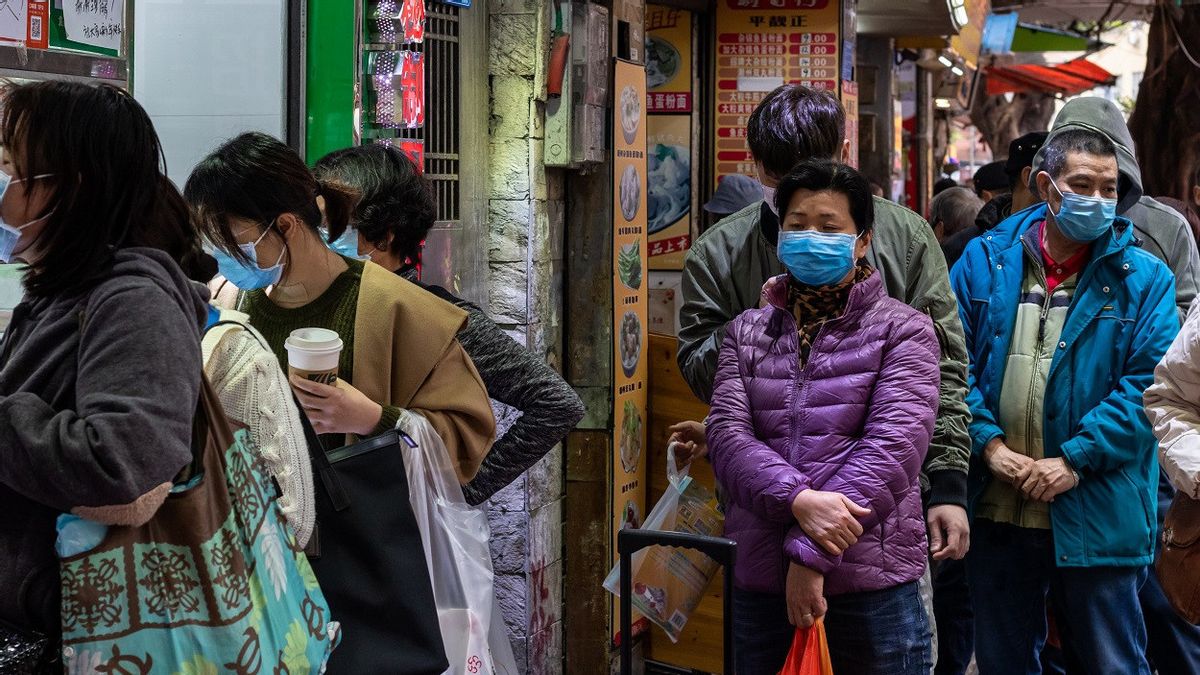JAKARTA - New coronavirus cases are surging in Guangzhou and other Chinese cities, official data showed on Tuesday, with global manufacturing hubs becoming China's newest COVID-19 epicenter, testing cities' ability to evade Shanghai-style lockdowns.
Nationally, new locally transmitted infections rose to 7,475 as of Nov. 7, according to China's health authorities, up from 5,496 a day earlier, the highest since May 1, with Guangzhou accounting for nearly a third of new infections.
The increase is modest by global standards but significant for China, where the outbreak must be tackled immediately when it emerges under its zero-COVID policy.
Economically vital cities, including the capital Beijing, are demanding more PCR tests for residents and locking down neighborhoods and even districts in some cases.
The sharp spike will test China's ability to keep its COVID measures on track and targeted, which could dampen investors' hopes if the world's second-largest economy can ease restrictions and restrictions soon.
"We see a 'game' between increasing votes for loosening controls and the rapid spread of COVID cases," said Nie Wen, an economist at Shanghai-based Hwabao Trust.

Guangzhou, the capital of Guangdong Province, reported 2,377 new local cases for November 7, up from 1,971 the previous day. It was a dramatic jump from the double-digit gains two weeks ago.
A spike in the number of cases in the sprawling southern city, dubbed the "world's factory floor", means Guangzhou has surpassed the northern Inner Mongolia city of Hohhot to become China's COVID epicenter, in the most serious outbreak ever.
Meanwhile, many districts of Guangzhou, including central Haizhu, have imposed varying degrees of restrictions and lockdowns. But, so far, the city has not imposed a lockdown like it did in Shanghai earlier this year.
Shanghai, which is not currently facing a resurgence of COVID-19, went into lockdown in April and May, after reporting several thousand new infections daily in the last week of March.
"We've been working from home for the past few days," said Aaron Xu, who runs a company in Guangzhou.
"Only a few complexes have been locked down so far. Mostly we see disruptions in the form of suspended public transport services and complex security restricting couriers and food delivery. And we have to do PCR tests every day," he explained.
Separately, Beijing authorities detected 64 new local infections, a small increase relative to Guangzhou and Zhengzhou, but enough to trigger a new PCR test boom for many of its residents and the lockdown of more buildings and neighborhoods.
"The lockdown situation has continued to deteriorate rapidly across the country over the past week, with our internal China COVID lockdown index rising to 12.2 percent of China's total GDP from 9.5 percent last Monday," Nomura wrote in a note on Monday.
SEE ALSO:
Zhengzhou, the capital of central Henan Province and a key production base for Apple suppliers, reported 733 new local cases for November 7, more than double the previous day.
As for the southwestern metropolis of Chongqing, it reported 281 new local cases, also more than double the 120 the day before.
In Inner Mongolia's coal-producing region, Hohhot City reported 1,760 new local cases on November 7, up from 1,013 the day before.
The English, Chinese, Japanese, Arabic, and French versions are automatically generated by the AI. So there may still be inaccuracies in translating, please always see Indonesian as our main language. (system supported by DigitalSiber.id)


















